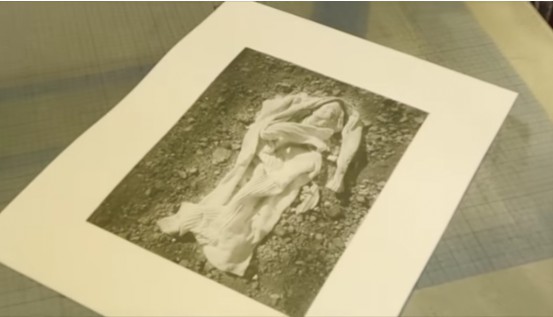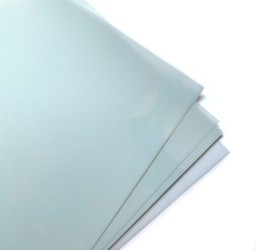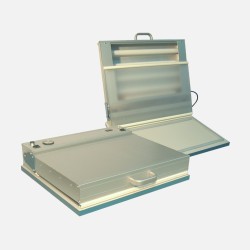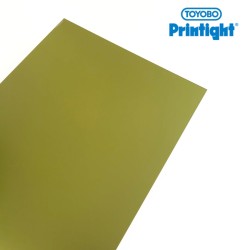The photopolymer plate consists of 3 elements: a steel base, a photosensitive layer, and a protective film. Its thickness is 0.94mm.
Its behavior is relatively simple. Under exposure to light in the ultraviolet range (UV, between 300 and 400nm), the particles in the photosensitive layer bind together and become insoluble in water. During development in water, the areas not exposed to UV will be removed. Drawing a black line on a transparent film will create an engraved line on the plate.
In our video, the exposure is done in two steps: first with a film called "aquatint screen," and then with the positive photograph printed on Agfa Copyjet transparent film using inkjet technology. The aquatint screen consists of numerous black dots randomly distributed with precise density. It simulates the grain achieved through the traditional aquatint technique on metal.
During film exposure, the aquatint grain is canceled in the transparent areas of the image and more or less preserved depending on the densities, allowing for various tonal values. After drying and post-exposure to fix the plate, the printing process follows traditional methods.
The use of Toyobo plates is not limited to photography. Many other applications are possible, such as pencil or gouache wash drawings on tracing paper, markers, and real materials (fabrics, etc.).




